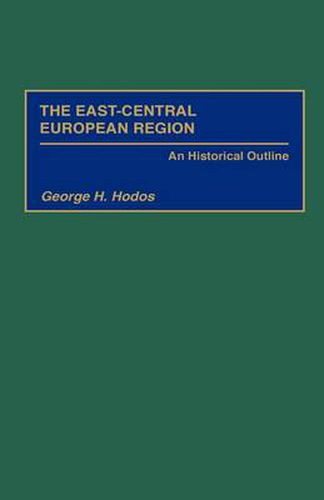Readings Newsletter
Become a Readings Member to make your shopping experience even easier.
Sign in or sign up for free!
You’re not far away from qualifying for FREE standard shipping within Australia
You’ve qualified for FREE standard shipping within Australia
The cart is loading…






An examination of East-Central European history, this book looks to the past for the roots of the cleavage between the eastern and western regions of Europe and the reasons for the East-Central countries’ backward and reactionary nature, their slide into fascism and war, and the ultimate destruction of the region within the Stalinist orbit. East-Central Europe emerged as a distinct region as early as the 15th century, when, in sharp contrast to an expanding urban economy and a loosening of serfdom in the West, it pursued a brutal Second Serfdom. This development would determine much of its future course, as 19th-century attempts to modernize society included revolutions from above and the abolishment of serfdom, while stubbornly retaining decisive feudal structures. After World War I, industrial developments created a semi-feudal, distorted capitalism, and the region soon saw the emergence of ultra-nationalist, fascist-style regimes whose actions would eventually lead to catastrophe. In the post-war era, the region found itself in the Soviet sphere. The short People’s Democracy period attempted to purge its structure of feudal, reactionary and fascist remnants, but soon got destroyed as a distinct region by brutal Stalinization. The collapse of Communism did not restore its separate existence, reintegration into the West requires a painful transition period with a yet uncertain outcome. Hodos produces an overview of the centuries-old vision, along with the resulting social, political and economic consequences. Chapters on anti-semitism and the Holocaust illustrate the stark differences between the regions.
$9.00 standard shipping within Australia
FREE standard shipping within Australia for orders over $100.00
Express & International shipping calculated at checkout
An examination of East-Central European history, this book looks to the past for the roots of the cleavage between the eastern and western regions of Europe and the reasons for the East-Central countries’ backward and reactionary nature, their slide into fascism and war, and the ultimate destruction of the region within the Stalinist orbit. East-Central Europe emerged as a distinct region as early as the 15th century, when, in sharp contrast to an expanding urban economy and a loosening of serfdom in the West, it pursued a brutal Second Serfdom. This development would determine much of its future course, as 19th-century attempts to modernize society included revolutions from above and the abolishment of serfdom, while stubbornly retaining decisive feudal structures. After World War I, industrial developments created a semi-feudal, distorted capitalism, and the region soon saw the emergence of ultra-nationalist, fascist-style regimes whose actions would eventually lead to catastrophe. In the post-war era, the region found itself in the Soviet sphere. The short People’s Democracy period attempted to purge its structure of feudal, reactionary and fascist remnants, but soon got destroyed as a distinct region by brutal Stalinization. The collapse of Communism did not restore its separate existence, reintegration into the West requires a painful transition period with a yet uncertain outcome. Hodos produces an overview of the centuries-old vision, along with the resulting social, political and economic consequences. Chapters on anti-semitism and the Holocaust illustrate the stark differences between the regions.